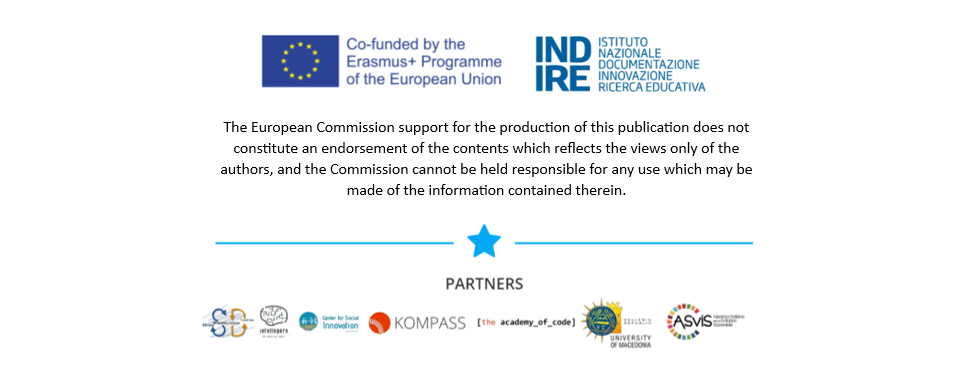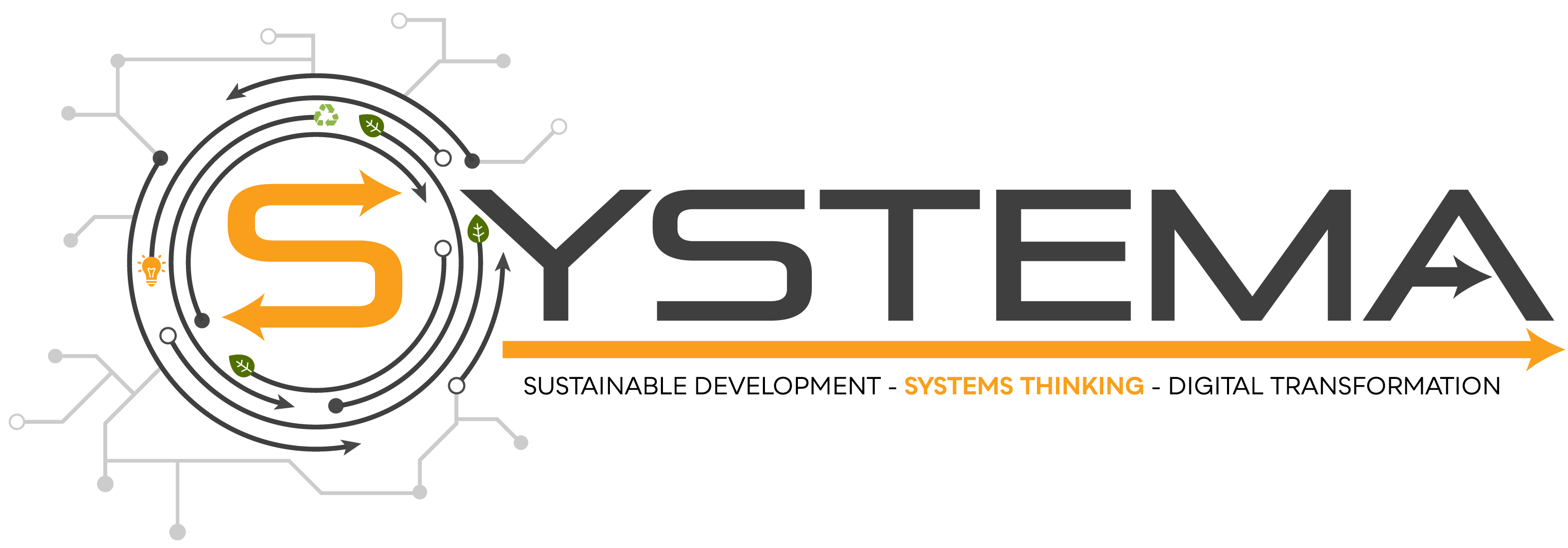Introduction
Sustainable development is among the grand challenges of the next decades. To come close to achieving that state, the European Union is committed to mainstream the Sustainable Development Goals (SDGs) in the European policy framework and current Commission priorities. Moreover, special attention is paid to means for the achievement of the SDGs, their universal application to all countries and the simultaneous address of the economic, environmental, and societal dimensions of sustainability. Thus, there is the need of not only raising awareness on the issue of sustainability, but acquiring a sustainability literacy, in the sense of a functional education that will provide the necessary skill and motives to cope with the challenges of and contribute to sustainable development. As a result, it is essential to provide an innovative pedagogical approach to higher education students as they will be our policy makers of tomorrow and hence need also to undertake some sort of managerial education starting from their age.
Games are a serious candidate to take that role and teach the complexity of sustainable development. Let’s see why.
Interactive Learning Environments are tools to learn about complex issues and to support decision-making
When talking about Managerial Education, it is pretty straightforward to include in the conversation the added value coming from Interactive Learning Environments (ILEs). These are generally developed in an attempt to make learning “more fun” through the use of media-based learning settings, such as digital games, board games, etc. When thinking of any other potential and more practical benefit in using these tools, we think such benefits are manifold, and cited research is only a part of the literature and experience confirming that.
In general, in comparison to traditional education approaches, ILEs aim at improving participants’ engagement, and thus facilitate learning (Gee, 2003; Shaffer, Halverson, Squire & Gee, 2005). For instance, ILEs aim to reduce the boredom in students at school by stimulating their participation in a playful manner, and hence providing a deeper understanding of the subject. Moreover, the use of ILEs has been recognised to deliver several additional positive effects, such as behavioural changes in participants, longer knowledge retention, and development of soft skills (Connolly et al., 2012; Wouters et al., 2013). These are considered more and more as being particularly useful in a world that demands well-developed horizontal competencies. Interestingly, as argued by Davidsen (2000), one peculiar use of ILEs is for research and validation. In this specific case, the purpose of ILE-based research and validation is “to identify the mental models governing human decision making and action in complex, dynamic domains. Consequently, we are using ILEs to find out what kind of information is being used and how that information is being applied when people make decisions and take action. Having done so, we may form hypotheses as to why people fail to succeed when operating in such domains” (Davidsen, 2000, p. 171). In this regard, evidence is still limited, and more research is advocated within the academic community.
Subsequently, given their ever more popular use, interactive learning environments have started to be developed in a wide variety of forms, including games as well: role-playing games, videogames, card-games, immersive virtual environments, etc. Hence, one of the forms in which ILEs have been developed takes the shape of the boardgame setting, which makes for a new class of interactive “board game-based” learning environments.
Board Games: a particularly attractive type of ILE
In 1986 in the department of psychology of the Moscow University, a graduate student was trying to teach about the construct of time to a psychology class for students of high school. The name of the student was Dmitry Davidoff and to make his teaching more accessible, meaningful and not boring for the high-schoolers, he invented a game that he named “Mafia”. In the context of the game, the majority of the students took the role of villagers, while a small number of them took the role of Mafiosi. The purpose of the game was for the villagers to find out who their evil co-citizens were, without first being killed. The game required no special equipment, it had only a handful of rules and it allowed for the introduction of variations.
The game spread like fire in the dormitories of the Moscow University. Soon enough, the game left the borders of the (then) Soviet Union and became a worldwide sensation, favored as one of the best party games and became the basis for a number of variations (the most famous of which is the Werewolf game1). The game demonstrated in the most emphatic way that teaching difficult subjects can be associated with fun and at the same time produce something that has repeatability in a non-classroom context. Simultaneously, the game itself drives scientific research across a variety of areas such as mathematics [1], artificial intelligence [2], psychology and communication [3], social dynamics [4] and more.
The game of Mafia was not the only one that used this alternative approach to teaching. Examples include Darfur is Dying (http://www.darfurisdying.com), Microsoft Flight Simulator (https://en.wikipedia.org/wiki/Microsoft_Flight_Simulator) to name just a couple of the more successful.
These games demonstrated that education could become a learning process and escape from the traditional, analytic way of teaching (Dieleman & Huisingh, 2006), be transformed into a more experiential and student-centred way of learning, help students to develop the ability of constantly assessing the environment, operating and adapting to it through continuous and iterative individual and personal process of revision from their frames of reference (Fabricatore & Lopez, 2012), provide the appropriate materials to comprehend complexity and equally import to be fun.
This experiential learning form has been increasing in importance with education on all levels (Hauge, et al., 2014) and in particular with game-based learning that has become an important issue for economy, society and research (Wang & Tseng, 2014). Such games that combine entertainment with an educational dimension are called Serious Games (SGs) (Michael & Chen, 2005); (Laamarti, Eid, & Saddik, 2014).
The potential of SGs to provide educational enhancement (Bellotti, Berta, & DeGloria, 2010) is already acknowledged in the research community along with the ability to:
• Allow learners to experience situations that are impossible in the real world for reasons of safety, cost, time etc. (Squire, 2002)
• Engage the user in a pedagogical journey and have a positive impact in the development of a number of skills (Mitchell & Savill-Smith, 2004)
• Enable improved self-monitoring, problem recognition and solving, decision making etc. (Katsaliaki & Mustafee, 2012)
• Create a context of communication, collaboration and sense of belonging (Klopfer, Osterweil, & Salen, 2009)
Now, looking at board games specifically, they are used for many purposes: teaching, training, experimentation, research validation, education, operations management, physical and/or psychological therapy. The scientific evidence available so far highlights the effectiveness of this type of interventions for various purposes and environments (De Freitas & Jarvis, 2007) (Meya & Eisenack, 2017) (Rumore et al, 2016) Notably, ILEs are effective learning environments if and when designed according to some fundamental learning principles, such as: learning from experience is considered very relevant for human development (Lewin, 1951; Kolb, 1984); learning occurs more easily when players are mentally active and challenged during the learning process (Barnabè, 2009 and 2016); deep learning (also named double loop learning, see Argyris and Schön, 1978) is more likely to occur through experimentation in a virtual world (Sterman, 2000); interacting with business games and models, players usually use their tacit knowledge and improve their skills and abilities; thereby obtaining new knowledge quickly and for conditions not observable in real life (Vennix, 1996).
Certainly, the usage of this type of learning tools in research, as well as for educational purposes in various types of public/private organisations (e.g. business, governments, therapy, etc.) is continuously increasing (Ritterfeld, Cody & Vorderer, 2009).
The success of these games is due to their ability to showcase innovative and unusual activities for engaging participants, as well as to promote learning among them. In fact, an added value of board games contrasting with video gamers’ “loneliness” is that the former usually involve group sessions, which literature indicates as further improving learning outcomes (Lou, Abrami & d’Apollonia 2001).
Compared to other forms of interactive learning tools, board games offer easy and versatile settings for group learning activities though cooperative or competitive experiences. We use the word “easy” here to convey that it might be more time/costs-convenient to develop a board game than an elaborated video-game, without giving up important aspects of the game experience itself (e.g. shared activities, face to face interactions with peers, decreased boredom, etc.). “Versatile” means that they can be used in various sessions by diverse groups in different moments without increased costs or without losing their “learning” power.
The physical elements are also very important aspect of the board games. They make players feel more in control of their own actions in the rules-bound environment. Players can explore the presented world with their own hands discovering and trying out different solutions to the in-game problems. With the tangible elements, players have an easier time in grasping the process observed in the game, as well as the relation between what happened in the game with the real-life world (Bogost, 2008).
As mentioned above, the learning outcomes of using board games can be manifold: promoting shared learning experiences, development or strengthening of skills (e.g. negotiation, adaptability, cognitive in general), acquisition of specific knowledge, etc. Moreover, this innovative approach can also increase participants long-term engagement with an organisation. In this regard, the integration between simulation and gaming is today very advanced and the results that emerge from such an integration are very effective tools for, though not limited to, managerial education (Davidsen, 2000). More and more often, their development is based on formal models and scientific algorithms, which ultimately also drive the rules of the games. This contributes to the realism of the engine as well as to a new and different, but reliable and engaging, way of sharing the ideas and concepts behind such models with non-experts (Papathanasiou et al., 2019a) (Papathanasiou et al., 2019b).
It is also worth mentioning that the use of such realistic board games as learning environments for purposes beyond entertainment has been documented since the nineteenth century. Back then, “Sketches of the Rebellion” was produced to facilitate the Union cause during the civil war, and “Pank–Squit” game was used to promote democratic rights of women (Hidayatno et al., 2013). Since then, boardgames have been used for training, education and experimentation in many contexts:
• Military (e.g. wargames to teach tactics, intelligence issues),
• Schools and academia, research (e.g. the SUSTAIN Project, Harmoonia, Red Vs Blue, and others),
• Communities (e.g. the RURITAGE, the EDUCEN and others)
• Business and management (e.g. Beer game aimed at understanding how to govern and anticipate problems in a supply chain (Sterman, 1992), and many others.
More recently, because board games have been successfully used for training and supporting policymaking in complex environments (e.g. for the management of sustainable cities, for promoting innovation policymaker to be more cooperative, for cybersecurity, etc.), and board game-based learning has been spreading in other decision-making environments, as well.
Edited by Armenia Stefano and Barnabé Federico
Sources:
•https://sustainerasmus.files.wordpress.com/2021/08/9c2a2-sustain_pmi_whitepaper.pdf
•https://sustainerasmus.wordpress.com/interactive-boardgame-based-learning-environments-for-decision-makers-training-in-managerial-education/
•https://www.pmbog.eu/wp-content/uploads/2021/10/Interactive-Learning-Environments-for-education.pdf

